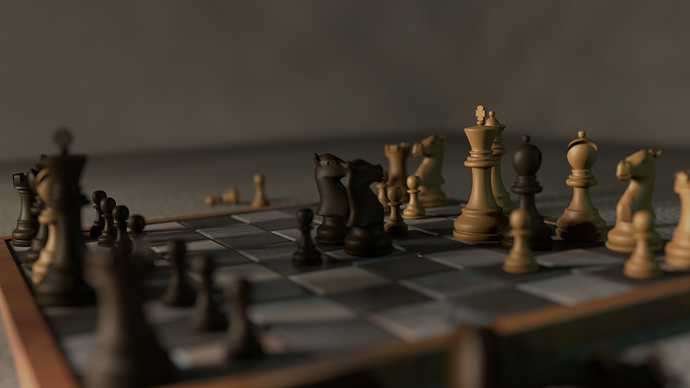It’s an interesting conundrum. Fix in post, or fix in the render. It’s weekend, and so I can explore both possibilities.
Not really. It is not an either or, it’s a and. Go as close as possible in the rendering, then finish up in the post production 
What you should care of is that the lighting doesn’t give away too much contrast. Also this is image information. So yes, make the lighting of your scene a bit brighter.
And you should completely avoid to produce burned out white spots or black spots. Since the best post production cannot restore image information that is not there. In the rendering blackest black should be above zero, and whitest white below 255. You will correct that one in the post production then. Like i did with your image.
That’s exactly how I’ve approached it. I added a single sun light in the same place as the emission plane to the left, with a reasonably high brightness, which really popped the contrast (a bit too much). Took it into gimp and started playing with the levels, without getting a satisfactory result. Then I tried layering the new image over the previous one and reducing the opacity, which toned down the contrast without sacrificing detail.
I quite like the result.
It’s still underexposed. The brightest spot is at brightness 170. White is at 255. Just look at the histogram ![]()
Took it into gimp and started playing with the levels, without getting a satisfactory result.
Below the histogram, move the right ruler to the first black line. It’s really this easy ![]()
Attachments
I understand the whys and wherefores, but to me it starts to look blown at when I do that.
Maybe you simply should keep it darker, it doesn’t necessarily mean it’s underexposed, you could just make it the way the image is supposed to look.
I understand the whys and wherefores, but to me it starts to look blown at when I do that.
I see ^^
Maybe you simply should keep it darker, it doesn’t necessarily mean it’s underexposed, you could just make it the way the image is supposed to look.
That’s most probably the problem here. It’s of course brighter after giving it the full contrast, since the brightest value was at 2/3 of the full possible value. But making the image simply darker makes it look underexposed again. When it turns out too bright after giving it the full contrast, then Gamma could help. You might need to play with the materials and light too.
Having the optimal contrast in the image is imho one of the essentials of post production. Even the darkest Low Key image has usually the full contrast.


